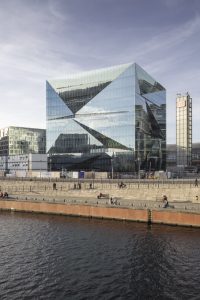Another big challenge comes from the interpretation of all the collected data. Bringing together all the different sources and platforms to provide a clear simple picture for building managers requires an expertise that the industry is struggling to develop. Technology seems to be overdesigned, some of it comes with built-in complexity that a lot of us do not even need or use. A good example of this is the software on our computers, the majority of us do not use the software we have to its full capability. Perhaps the focus should be on simplification to make the digital work with the physical.
Whilst there are many functions, we haven’t found a specific ready-made software that allows different building users, whether these are the owners, tenants or employees who could all refer to the same app that can pull together everyone’s data. At Drees & Sommer we are working on our own piece of software, Mosaix, a data aggregator that merges all real estate related data from multiple sources on a single platform. The software can provide users with complete transparency across a building’s entire lifecycle as well as collect data from different sources. It enables users to obtain georeferenced information at a glance on, for example, a certain address over its entire life cycle, without actually having to be physically there.
DATA COLLECTION
There also is a huge debate regarding the responsibility of AI with data collection. Even with GDPR in place, there is a responsibility for people to harvest data in the right way – this was a big issue in the UK Government’s efforts to develop the track and trace app since there is a concern not only about keeping people safe but also about keeping their privacy safe. There are still many obstacles to overcome. People need to understand that essentially they and their data are the product when they use a free piece of software or an app. The true product is themselves, their data and their habits, and people need to come to terms with this and trust their data is being used responsibly.
These sorts of obstacles have to be surpassed if we’re trying to overtake that lag between the advanced technology and the physical spaces. The more integrated these things get, the easier it will be to incorporate technology into our regular lives.
 Situated in one of the most prominent squares in Berlin, the building is designed to enable interaction with user needs and demands as well as respond to user patterns. The idea is to give users a more intelligent and engaging experience and help save energy.
Situated in one of the most prominent squares in Berlin, the building is designed to enable interaction with user needs and demands as well as respond to user patterns. The idea is to give users a more intelligent and engaging experience and help save energy.
The concept of Smart Building will be taken to the next level by implementing an intelligent exchange – a self-learning “Brain” – to coordinate all the individual systems users interact with on a daily basis, including: access control, lift operation, climate and light control, booking systems, etc. These are all connected to deliver a more effective and engaging user experience.
With the use of an app, users and visitors are able to interact with the building, bringing much wider benefits than simply opening doors and calling lifts. The app intends to help connect people, drive sustainable behaviour and make their working day more efficient. Users will for instance be able to identify the optimal work space based on their unique preferences, location of co-workers and energy efficiency at any given time.
cube berlin_©Adam Møerkz





